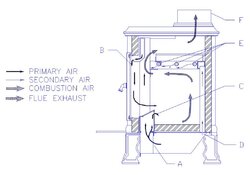I've been looking at new stoves. The reburn tubes aren't connected to any tubes to bring in
air. I always thought the tubes brought in air and that is what causes the reburn. Some stoves have 2 vents one for the fire box one for the the tubes.
These stove I see only have one vent. So how do these reburn tubes work if the is no air going through them?
air. I always thought the tubes brought in air and that is what causes the reburn. Some stoves have 2 vents one for the fire box one for the the tubes.
These stove I see only have one vent. So how do these reburn tubes work if the is no air going through them?


